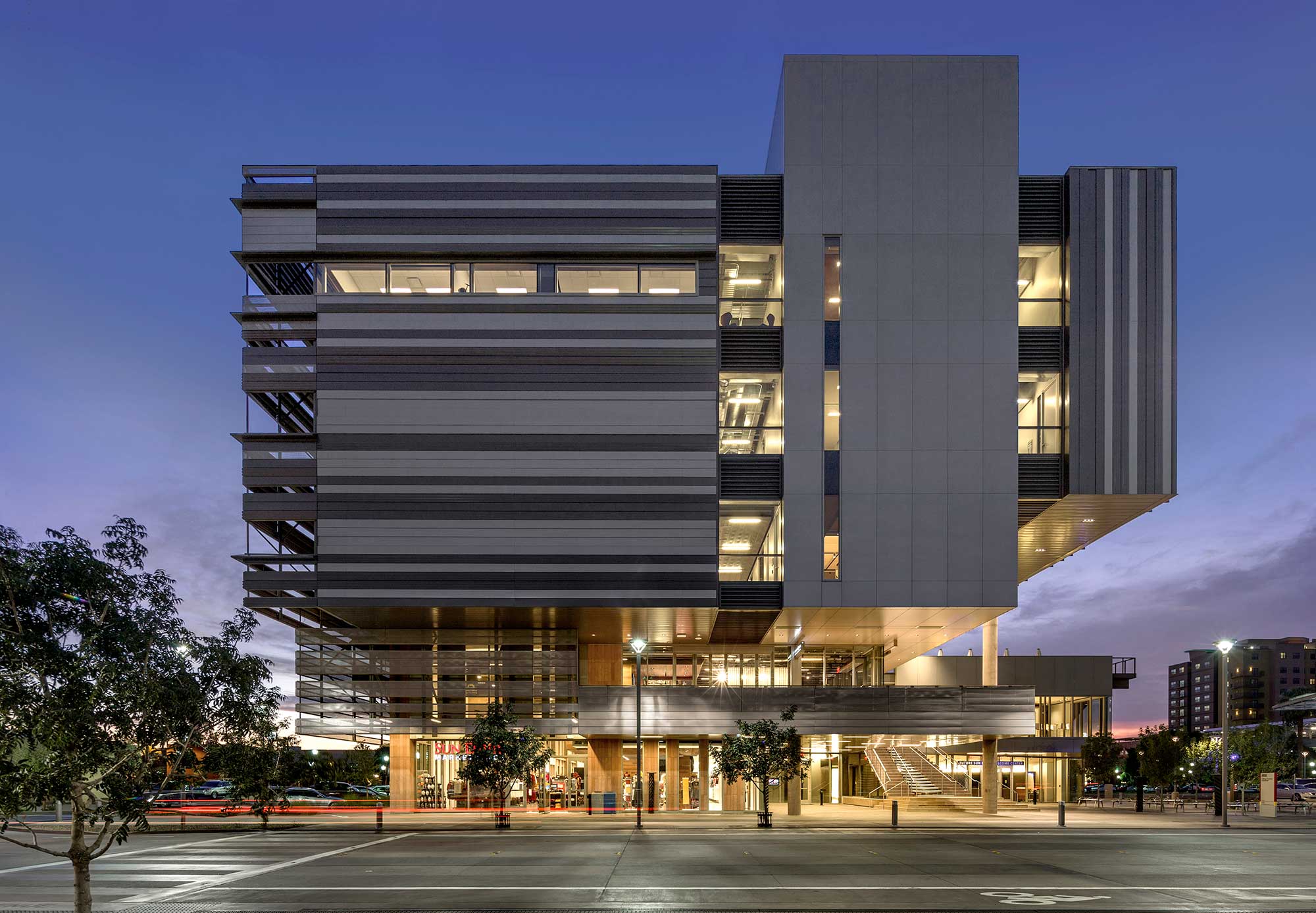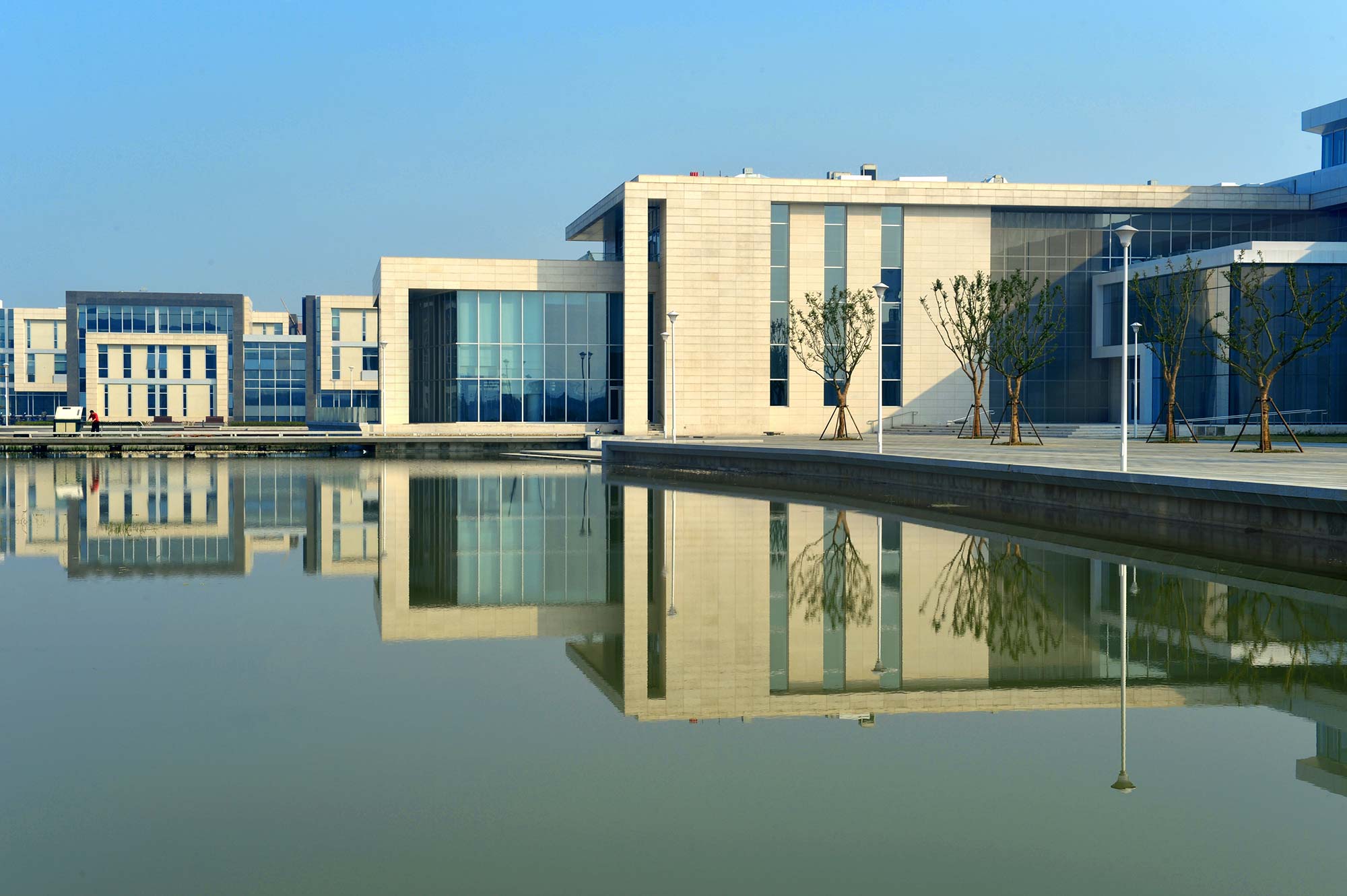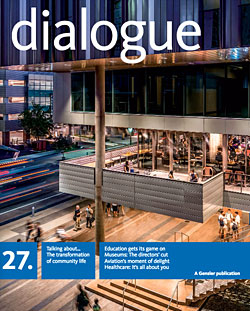Education Gets Its Game On
From middle schools to universities, the push is on to speed up learning and spark people’s creativity. Tech figures in this, but place is where innovation happens.
Can place change the way that students interact? Can it alter their perceptions of learning? Improve their levels of engagement and effectiveness? The evidence suggests that it can. Whether they’re just starting out or nearing graduation, it’s increasingly clear that students need creative environments to enhance their learning experience.
Gensler researchers have asked how conventional academic settings perform compared with flexible, collaborative ones. Their studies show that the latter increase the level of collaboration among students. This maps closely with Gensler’s experience designing life sciences and technology work settings to spur innovation, but the goals of education are different. Industry-based incubators, accelerators, and coworking spaces are benchmarks, but academia has to find its own way and develop its own models.

Reinventing education
Educational institutions are commissioning spaces that reflect a shift toward more varied ways of learning. The most successful spaces empower students to solve things that really matter in their social context. Who are these students? The new generation has grown up with unprecedented access to information. They expect institutions to keep pace with their experience. “They want more flexibility about when, where, and how they learn,” says Gensler’s David Broz. “They expect the same level of personalization that they get from phone apps.” That desire means that education is being reinvented. There’s interest in leveraging the technology and the maker culture, and experimenting with new forms and formats. Broz and his Gensler colleagues are in the thick of it on a global basis. Here’s a report.
Learning as a team sport
Across education, there’s a heightened interest in active, experiential learning. A relevant model is provided by David Thornburg, an innovator in the field. In his view, optimal settings for learning balance the Campfire, where stories are told, the Watering Hole, where exchanges happen, and the Cave, where individual work is done. Gensler first applied Thornburg’s ideas to the New Line Learning Center in Maidstone, UK, as part of the Kent County Schools Program. Now they are finding application at the university level in Brazil in a multicity entrepreneurship program aimed at design and engineering students. Each location accommodates varied work styles, combining a technology-based lab environment with multiple spaces for collaboration and personal work. “There’s a strong sense that ‘this is our space.’ Students tell us they now realize how important the settings are,” says Gensler’s Patricia Nobre, who led the design. “The learning environment is highly customizable so the students can engage with it,” she adds. “Their ability to create experiences makes it memorable, a ‘wow’ that actually reflects their own inventiveness.”
Achieving a comparable “wow” is the goal for Wiseburn High School in El Segundo, California. Its four-story building will house three separate schools, each on a separate floor. They have different focuses, programs, and maker spaces. All three cluster easy-to-modify classrooms around common areas to get rid of corridors and achieve the flexibility and openness typical of creative workspaces. “This will facilitate team learning. Students are actively engaged with each other and their teachers,” says Gensler’s David Herjeczki.
The shift these projects exemplify is grounded in findings that team learning has a higher benefit than traditional methods. University of Minnesota researchers studied two classes on the same topic and with the same teacher. Students had similar ACT test scores going in. Class 1 was taught in a traditional lecture/lab setting and Class 2 in a flexible, collaborative active-learning setting. Afterward, students in Class 2 tested higher than those in Class 1.

Scripting the unscripted
At PlayMaker School in Santa Monica, the focus is on learning through playing, making, and discovering. Aimed at sixth and seventh graders, the program provides students with three purpose-built spaces that encourage them to experiment, explore, and arrive at their own solutions to complex problems. “It’s pretty radical,” says Gensler’s Shawn Gehle. “PlayMaker renovated an existing school, replacing classrooms with prototypical settings for each of these activities.”
PlayMaker students are immersed in virtual and physically interactive environments with myriad entry points to the problems they’re tackling—problems drawn from science, technology, engineering, art, and math. They collaborate with teachers in developing ideas in the Dream Lab, and then move to the Adventure Room. Here, their work is video-projected onto the floor so the students can engage directly with what they’re creating—one of many forms of making, including 3D printing. “The school is designed to create a sense of possibility as well as give students the means to make it happen,” Herjeczki says. “They realize they don’t have to accept things as they are.”
That same self-scripted approach to learning shows up in higher education, even where you wouldn’t expect it. Take College Avenue Commons at Arizona State University–Tempe. Universities are eager to leverage their real estate, so it houses campus activities that were once separate—like the Sun Devil Marketplace and the Del E. Webb School of Construction—in a mixed-use building at the border of town and gown. “It’s where campus tours start,” Gensler’s Patrick Magness says. “It’s where ASU students take classes, professionals rub elbows with academics, ASU’s regents meet, and flat whites are consumed and live events seen.” Adds Gensler’s Julie Hutchison, “It’s intentionally diverse—designed to be curated, to be changed and changed again. Even the bookstore is less about selling books and more about promoting the culture that books help create.” Universities benefit from looking beyond academia for models. College Avenue Commons is the kind of fluid, fine-grained hybrid that’s also a staple of commercial mixed-use development.

Settings to speed innovation
Companies that take innovation seriously and invest huge sums in it are attractive (and attracted) to academia as potential partners, not just models. In considering which types of spaces will best facilitate innovation, universities look to incubators and accelerators. What’s the difference? Incubators—as common as baristas in the tech industry—are where people come up with ideas for new startups and germinate promising concepts. Accelerators are geared to people with developed ideas who need the funding to scale them up. The incubator/accelerator space is typically a hybrid combination of workspace, learning space, and social space, most of it flexible and multiuse. Sound familiar? PlayMaker School has comparable settings. It also maps well to David Thornburg’s ideas for learning environments. “The emphasis is on scenario-based learning, giving people real-world experience in trying things out—a place to break things and fail fast on the road to success,” Broz says.
The philosophy of “fail early and often” is the credo of Silicon Valley, of course, with its famous garages from which HP and Apple sprang. They are honored by Northwestern University’s The Garage, an incubator for student entrepreneurs that’s actually located in a parking garage, its parking stripes left intact. The Garage is part of a campaign to boost innovation and cross-departmental collaboration across the campus.
Retail trends also influence incubator spaces. Gensler’s Mark Thaler points to New York University’s Mark and Debra Leslie Entrepreneurs Lab, made possible by a major gift to the school. Its location right on Washington Square Park is a way to grab the attention of student passersby. The 5,900-square-foot lab is a place where aspiring students, faculty, and research entrepreneurs from all of NYU’s schools and colleges can connect and collaborate. “A full-time concierge acts as an ‘idea matchmaker’ to help people with shared interests find each other,” Thaler notes.
FastForward East, a Baltimore startup incubator, is also visible from the street. Serving Johns Hopkins University’s schools of medicine, nursing, and public health, it gathers biotech, medical, and pharma entrepreneurs—in part by offering 2,500 square feet of lab space, a scarce resource for young companies.

In the UK, the University of East London (UEL) saw a model in Level39, a Gensler-designed financial-tech accelerator at London’s Canary Wharf that surrounds budding startups with banking and financial services clients. UEL’s Business Innovation Center “is sparking interaction between startups and UEL’s faculty and students,” says Gensler’s Maria Nesdale. “That is shifting how people teach and UEL’s expectations for the student experience.”

Converging around shared themes
While education at every level is focused on speeding learning and supporting innovation, the more important trend is that these institutions are looking beyond the school, campus, and sector for examples of how do it. And industry views them as interesting collaborators. They recognize that the faculties and students are genuinely excited by the possibilities and open to what design and technology have to offer. If, in the past, educational institutions were focused on injecting “real life” into their programs, they are likely in the future to view the academic/real-world divide as a needless hindrance. The ability to find partners outside the academy, the likelihood of faculty and students moving easily between theory and practice, seeing learning as a lifetime endeavor—these trends are making education and its settings more porous and better suited to how people actually learn, collaborate, and innovate.

THE NEW DUKE KUNSHAN UNIVERSITY OPENS NEAR SHANGHAI
The 40-acre first phase of Duke Kunshan University (DKU) had its formal opening in November 2014. Founded jointly by Wuhan University and Duke University, DKU will grow over time into a 200-acre campus, planned by Gensler within the Kunshan Yangcheng Lake Science Park. The initial phase includes an academic center, conference center, innovation center, faculty and student residences, and a service building. Tim Etherington, managing director in Shanghai, joined DKU founding partners and leaders in unveiling the brand-new campus. “The DKU campus blends local context with references to Duke University’s liberal-arts tradition,” he told the crowd. “It is a model of sustainable, energy-efficient development.”
Allison Arieff is SPUR’s editorial director. She writes regularly from San Francisco for the New York Times, California Sunday Magazine and other publications.


